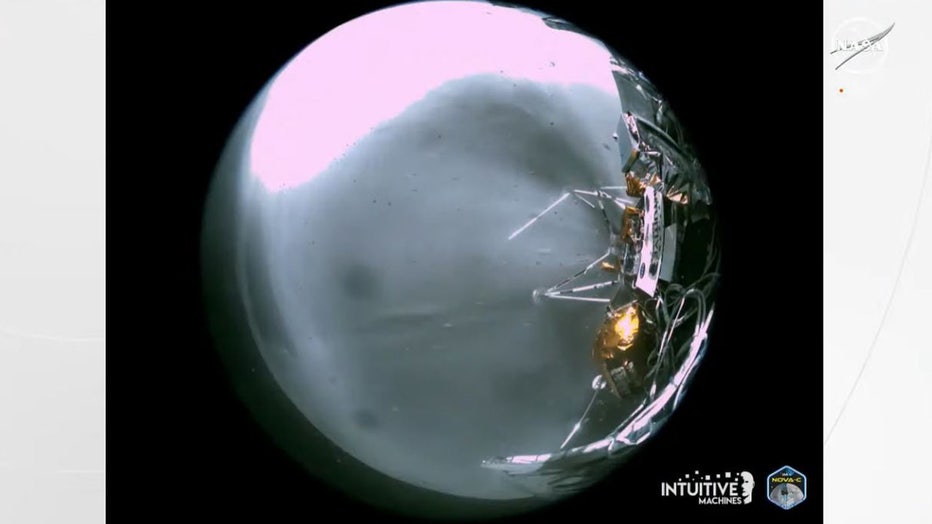Lunar lander sends final images from the moon before being put to sleep

FILE - Image showing Odysseus landing on the moon. (NASA/Intuitive Machines)
NASA and Intuitive Machine's moon lander, Odysseus, managed to send back a few more images after it touched down on the moon's surface earlier this week.
The spacecraft, built by Houston-based Intuitive Machines, landed on its side, impeding communication and further power production, the Associated Press reported.
Odysseus, nicknamed Odie, continues to generate solar power but the amount of power that Odie is able to put out won't allow data to be sent back in the long term. Before that happens, Intuitive Machines plans to put Odie to sleep and will wake him back up in the next two or three weeks.
The objective to wake Odie back up is to test whether the lander is able to send back a signal once the sun hits its solar panels once more, Altemus said during a news conference on Wednesday.
"We're excited about that," Altemus added.

Odysseus successfully lands on the moon
Intuitive Machines' Odysseus spacecraft successfully completed an historic moon landing. It marks the first US moon landing in 52 years and the first ever Moon landing by a private company.
One of the three new images released by NASA and Intuitive Machines showed Odie touching down on the moon's surface, as well as a piece of the landing gear that broke off, causing the lander to rest on its side.
Another image showed a fish-eyed lens view of Odie on the moon's surface and the broken landing gear is still prominently visible.

FILE - Fish-eyed lens view of Odie on the moon's surface. (NASA/Intuitive Machines)
And the third image is angled, showing Odie as the lander rests on its side.

FILE - Image that shows Odie tilted on its side. (NASA/Intuitive Machines)
RELATED: Odysseus moon lander: More pictures sent back with only hours left until it dies
On Feb. 22, the Odysseus lander captured images of the moon before making the first U.S. touchdown on the moon in over 50 years.
Intuitive Machines also posted new photos of the moon’s unexplored south polar region Tuesday.
NASA Administrator Bill Nelson said he considers the Odysseus mission a success, given that all six of the space agency’s experiments on the lander were still working as of Wednesday morning, six days into what should have been eight days of operations. But he noted: "There’s a big difference on landing a crew and landing a bunch of instruments."
The space agency paid Intuitive Machines $118 million to fly its experiments to the hilly and shadowed south polar region. That’s where NASA plans to land astronauts in another few years as part of its Artemis program, named after Apollo’s mythological twin sister.
NASA safely landed 12 Apollo astronauts on the moon from 1969 through 1972, then withdrew from surface operations until Odysseus’ arrival last Thursday.
Intuitive Machines is the first private business to pull off a moon landing, a feat previously achieved by only five countries. Japan was the latest country to score a landing, but its lander also ended up on its side last month.
The Associated Press contributed to this report. This story was reported from Washington, D.C.

